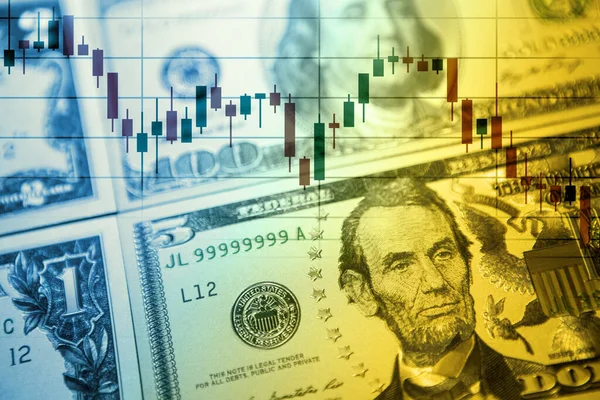Decoding Forex Market Hours

The Forex market, also known as the foreign exchange market, presents a hub for currency trading that operates on a scale unlike any other financial market. It is renowned for its high liquidity, vast trading volume, and its continual operation, excluding weekends. Understanding Forex market hours is essential for traders to navigate the market efficiently.
Forex market hours are unique because they stretch across four major time zones and enable traders to engage in transactions virtually 24 hours a day during weekdays. The four primary time zones for Forex trading are Sydney, Tokyo, London, and New York, and as one market closes, another opens, or they overlap, ensuring continuous trading opportunities.
The Forex market officially starts each week when the Sydney market opens at 5 pm EST on Sunday, and it closes when the New York market ends its session at 5 pm EST on Friday. This round-the-clock operation provides flexibility for international traders to operate beyond the constraints of their local market hours.
Given this flexibility, traders can participate in the market at their convenience. However, understanding when sessions open and close in different time zones can provide a strategic edge. Therefore, decoding Forex market hours is the stepping stone to formulating an effective trading plan.
Understanding 24/5 Trading

Forex market’s 24/5 structure is a distinctive characteristic that sets it apart from other financial markets, like stock exchanges, which generally adhere to the business hours of their respective countries. This continuous operation is facilitated by the global demand for currency transactions across different time zones, driving the need for access to the Forex market outside of traditional hours.
The market’s 24-hour cycle is broken down into four main sessions: the Sydney session, the Tokyo session, the London session, and the New York session. These sessions correspond with the business hours of their respective regions, allowing for a period of increased activity when two sessions overlap due to the concentration of market participants.
The 24/5 trading cycle allows traders to react promptly to breaking news and economic events that can affect currency values. This responsiveness is crucial in the Forex market, where currency pairs can experience significant volatility within minutes or hours.
The ability to trade at almost any time offers flexibility, particularly to part-time traders who may need to fit trading around other commitments. It also benefits those who trade on international news events, as these can occur outside of a single country’s trading hours.
Despite the advantages of a 24-hour market, traders should be aware of the potential for lower liquidity outside of peak trading hours. During these times, currency pairs may exhibit wider spreads, and price movements can be more erratic.
Best Times to Trade Forex

While the Forex market is open 24 hours a day during the week, not all trading hours are created equal. The best times to trade Forex often hinge on finding the perfect balance between the availability of market liquidity and volatility. Here are some of the optimal windows:
- Overlap of London and New York Sessions: This period is widely regarded as the pinnacle of trading opportunities due to the significant volume and liquidity stemming from the convergence of traders from both markets.
- The Middle of the Week: Usually, Tuesday, Wednesday, and Thursday are considered the most active trading days, as they are distant from the direction-setting influence of the weekend.
- Release of Economic Data: Critical reports and news releases can cause substantial market movement, making times surrounding major economic announcements prime for trading.
While these windows are generally considered the best times to trade, market conditions can change, and what may be an optimal time one day may not be as advantageous the next. Traders should stay informed and flexible.
Major Forex Market Overlaps

Market overlaps occur when two trading sessions are open at the same time. These periods are typically the most liquid and volatile, presenting the best trading opportunities. The major Forex market overlaps are:
- Sydney/Tokyo: This overlap is not as volatile as the others, but it still offers opportunities, particularly in currency pairs that involve the Australian dollar and the Japanese yen.
- Tokyo/London: While this overlap is brief, it can provide a jumpstart to the trading activity and a preview of market sentiment for the rest of the day.
- London/New York: This is the most significant overlap, occurring from 8:00 am to 12:00 pm EST. It accounts for the lion’s share of Forex trading volume, with the highest liquidity and potential for price movement.
Timing trades during these overlaps can lead to profitable opportunities due to the increased activity and tighter spreads. However, traders must also be cautious of the heightened volatility.
Influence of Time Zones on Forex

The Forex market’s time zone diversity can have a profound effect on trading strategies and outcomes. Here is how time zones can influence Forex trading:
- Volatility Patterns: Different currency pairs exhibit varying levels of volatility depending on the time zone due to the presence or absence of key market players.
- Economic Releases: Time zones dictate when a country’s economic data is released, which can cause immediate and significant impacts on the corresponding currency’s value.
- Global News: Political and economic developments in one country during its business hours can affect the global Forex market.
Traders need to be aware of the interplay between time zones and trading hours to anticipate market movements and manage risks effectively.
Strategic Trading During Peak Hours

Trading strategically during peak hours can optimize a trader’s chances for success. Here are some tactics that can be employed during these windows:
- Seek High Liquidity: Engage in trading when liquidity is at its highest to benefit from tighter spreads and better pricing.
- Monitor Overlaps: Take advantage of overlaps in market hours, where trading volume and volatility are amplified.
- Stay Informed: Keep abreast of economic calendars and news events that can trigger significant market movements during peak trading hours.
Trading during peak hours can be a double-edged sword, however. While opportunities increase, so does the competition and risk. Traders should employ robust risk management strategies to protect their investments.
Forex Trading Hours Comparison Table
| Forex Market | Opens EST | Closes EST | Overlap Periods (EST) |
|---|---|---|---|
| Sydney | 5:00 PM | 2:00 AM | Tokyo (7:00 PM – 2:00 AM) |
| Tokyo | 7:00 PM | 4:00 AM | Sydney/London (3:00 AM – 4:00 AM) |
| London | 3:00 AM | 12:00 PM | New York (8:00 AM – 12:00 PM) |
| New York | 8:00 AM | 5:00 PM | London (8:00 AM – 12:00 PM) |
Introduction
The Forex market, with its sprawling reach across continents and currencies, operates in a time zone-spanning continuum that offers opportunities and challenges to traders worldwide. Unlike traditional stock markets, the Forex market’s unique 24/5 trading schedule allows traders to capitalize on currency fluctuations around the clock. This article delves into the intricacies of Forex trading hours, helping traders to understand when to engage with the market for maximum potential.
The Forex market’s extensive hours offer unparalleled flexibility and opportunities for traders to engage in currency exchange across different time zones. Decoding the Forex market hours, understanding the 24/5 trading cycle, and identifying the best times to trade are crucial for anyone looking to succeed in this dynamic environment. Strategic trading during peak hours and market overlaps can amplify the chances for profitability, but it also demands a disciplined approach to risk management. By mastering the rhythm of the Forex market, traders can navigate the ebb and flow of currencies with precision and confidence.

